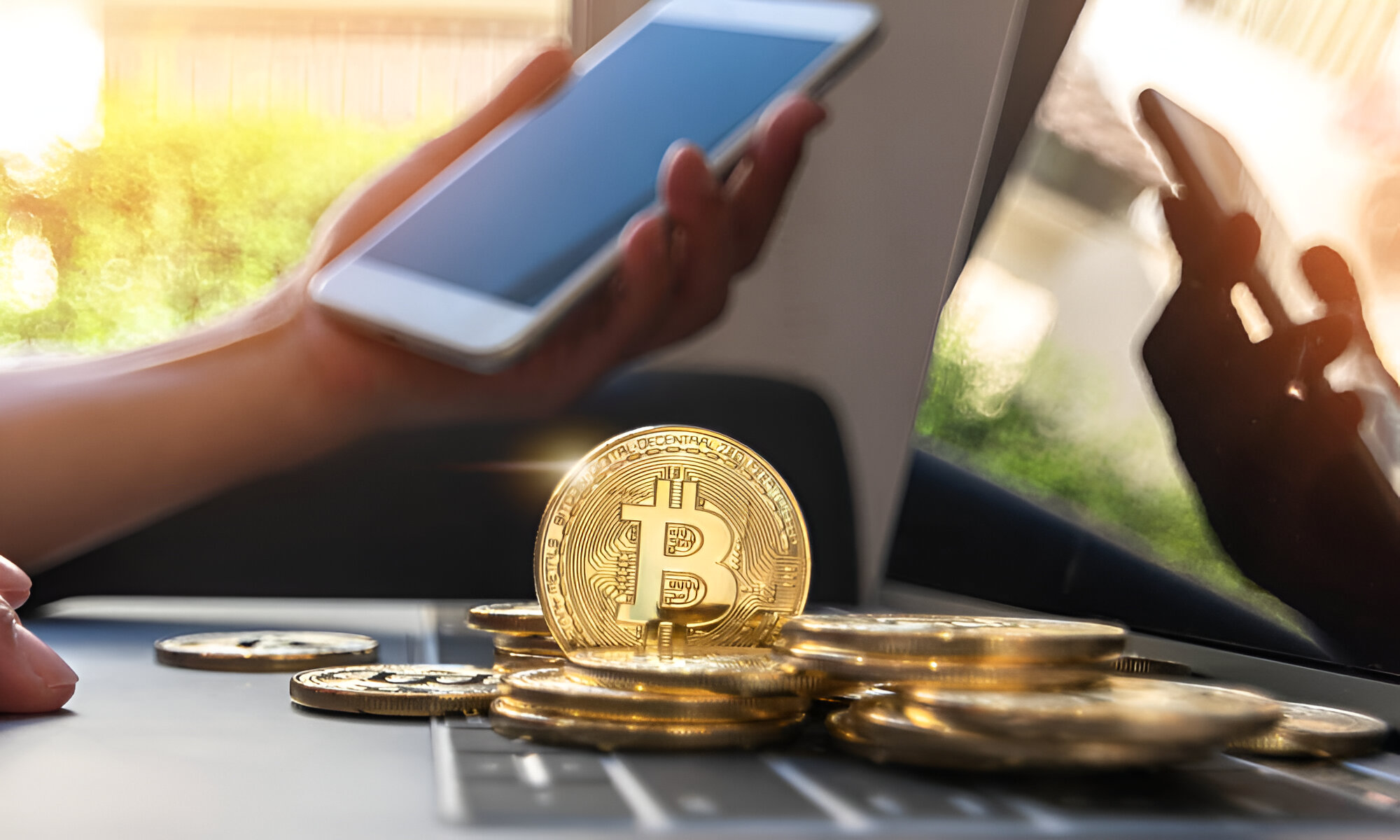Introduction
Peer-to-Peer (P2P) connection is a technology that allows devices to communicate with each other directly, without the need for a central server. It is a decentralized approach to establishing connections between devices on a network, enabling them to interact and share resources seamlessly. P2P connection has become increasingly popular with the rise of the internet and the need for efficient distribution of data.
In a P2P connection, each device acts as both a client and a server, providing and requesting resources from other devices on the network. This distributed architecture eliminates the reliance on a central server, which can be a single point of failure and can limit the scalability of a network. With P2P connection, devices can communicate and share information directly, creating a more robust and efficient network infrastructure.
The concept of P2P connection originated from file-sharing networks, where users could exchange files directly with each other, bypassing the need for a central file server. This decentralized model allowed for faster and more efficient file transfers and became the foundation for various P2P applications.
Today, P2P connection is widely used in various fields, including file sharing, streaming services, voice and video communication, decentralized applications, and content delivery networks. It offers several advantages over traditional client-server architectures, such as faster data transfer speeds, increased reliability, and lower infrastructure costs. However, it also presents some challenges, including security and privacy concerns that need to be addressed.
In this article, we will delve deeper into the definition of P2P connection, explore how it works, discuss its advantages and disadvantages, provide examples of P2P applications, and highlight the security and privacy issues associated with this technology.
Definition of P2P Connection
P2P connection, also known as peer-to-peer connection, is a networking technology that allows direct communication and resource sharing between devices without the need for a centralized server. In a P2P connection, each device acts as both a client and a server, enabling them to interact and exchange data with other devices on the network.
In traditional client-server architectures, all communication flows through a central server. Clients send requests to the server, which then processes the requests and sends back the desired information. This model can create bottlenecks and single points of failure. P2P connection, on the other hand, distributes the workload among all participating devices, allowing for decentralized and more efficient communication.
Each device in a P2P network is equipped with P2P software, which facilitates the establishment of connections and the exchange of data. These devices, referred to as peers, can discover and connect to other peers on the network using their unique network identifiers, such as IP addresses or device IDs.
Once connected, peers can engage in various activities, including file sharing, real-time communication, collaborative tasks, and resource sharing. For example, in a P2P file-sharing network, users can download and upload files directly from other users’ devices, eliminating the need for a central file server.
P2P connection relies on protocols specifically designed for peer-to-peer communication, such as BitTorrent, eMule, and WebRTC. These protocols facilitate efficient data transfer, ensure data integrity, and enable the negotiation of connections between peers.
It is important to note that P2P connection can exist within a local network or over the internet. Local P2P connections are typically limited to a specific group of devices connected to the same network, such as in a home or office environment. Internet-based P2P connections, on the other hand, allow peers to connect with each other regardless of their geographical location, expanding the possibilities for collaboration and resource sharing.
In summary, P2P connection is a networking technology that enables direct communication and resource sharing between devices without relying on a centralized server. Peers in a P2P network can interact with each other and exchange data, creating a decentralized and efficient network infrastructure.
How Does P2P Connection Work?
P2P connection works by allowing devices, referred to as peers, to establish direct connections with each other and exchange data without relying on a central server. The process of establishing a P2P connection involves several steps:
- Peer Discovery: Before peers can communicate, they need to discover each other on the network. This can be achieved through various methods, such as using a central tracker or employing decentralized algorithms. Peers may exchange their network identifiers, such as IP addresses or device IDs, to establish initial contact.
- Connection Establishment: Once peers have discovered each other, they need to establish a connection. This is done by exchanging connection information, such as IP addresses and port numbers, through a handshake process. Peers may utilize protocols like TCP or UDP to establish reliable or lightweight connections, depending on the nature of the data exchange.
- Data Exchange: Once the connection is established, peers can exchange data directly. The data may be split into smaller pieces called “chunks” to enhance efficiency. Peers can request specific chunks from each other, allowing for parallel and simultaneous data transfer. These data exchanges can occur in real-time or through a store-and-forward mechanism, where peers store data temporarily for other peers to access later.
- Routing: In a decentralized P2P network, efficient routing algorithms are used to ensure that data is delivered to the correct peers. These algorithms determine the best paths for data to travel, optimizing for factors such as network congestion, latency, and availability.
- Resource Management: P2P networks often employ resource management protocols to maintain fairness and efficiency. These protocols govern actions such as selecting the most appropriate peers to connect with, managing bandwidth usage, and handling issues like peers entering or leaving the network.
It is worth noting that the process of establishing and maintaining P2P connections can vary depending on the specific P2P technology being used. Different P2P applications may have different requirements and employ different protocols to facilitate efficient data exchange and resource sharing.
Overall, P2P connection allows peers to communicate and exchange data directly without relying on a central server. This decentralized approach offers benefits such as increased scalability, improved efficiency, and resilience against single points of failure.
Advantages of P2P Connection
P2P connection offers several advantages over traditional client-server architectures. Let’s explore some of the key benefits:
- Increased Scalability: P2P connection allows for a more scalable network infrastructure. In a traditional client-server architecture, the server can become a bottleneck as the number of clients increases. With P2P connection, the workload is distributed among all peers, enabling the network to handle large numbers of devices without the need for a central server to handle all requests.
- Faster Data Transfer Speeds: P2P connection can provide faster data transfer speeds compared to client-server architectures. Peers can simultaneously download and upload data from multiple sources, allowing for parallel data transfers. This decentralized approach eliminates the reliance on a single server, resulting in faster and more efficient data exchanges.
- Improved Reliability: P2P connection enhances network reliability by eliminating single points of failure. In a client-server architecture, if the server goes down, the entire network may become inaccessible. With P2P connection, even if one or more peers go offline, the remaining peers can continue to communicate and share resources. The distributed nature of P2P networks ensures a high level of availability.
- Reduced Infrastructure Costs: P2P connection can lead to lower infrastructure costs compared to client-server architectures. In a traditional client-server setup, a dedicated server is required to handle all requests and store data. P2P connection, on the other hand, allows peers to contribute their resources, such as storage and bandwidth, reducing the need for expensive centralized infrastructure.
- Decentralized Control: P2P connection gives users more control over their data and resources. Since the network is not reliant on a centralized server, there is no single entity that can control or restrict access to information. Peers can directly interact with each other, enabling a more democratic and open exchange of data.
- Scalable Content Distribution: P2P connection is highly effective for content distribution. By leveraging the resources of multiple peers, large files or popular content can be distributed more efficiently. Each peer contributes a portion of data, reducing the strain on any single source and allowing for faster and more reliable downloads.
Overall, P2P connection offers advantages in terms of scalability, speed, reliability, cost-effectiveness, control, and content distribution. These benefits make it an attractive option for various applications, including file sharing, streaming services, collaborative tasks, and decentralized networks.
Disadvantages of P2P Connection
While P2P connection offers several advantages, it also presents some challenges and disadvantages. Let’s explore some of the key drawbacks:
- Security Risks: P2P connection can introduce security risks as it allows direct communication between devices. Peers may be vulnerable to attacks such as malware infections, unauthorized access, and data breaches. Without proper security measures, sensitive information can be exposed to potential threats.
- Privacy Concerns: P2P connection raises privacy concerns as peers directly interact with each other. It may be challenging to ensure the confidentiality of sensitive data when multiple devices have direct access to it. Users need to be cautious when sharing personal or sensitive information on P2P networks.
- Network Congestion: P2P connection can contribute to network congestion due to the decentralized nature of data transfer. As peers exchange data directly with each other, it can lead to increased network traffic, potentially affecting the performance of other devices on the network.
- Network Dependence: P2P connection relies on the availability and cooperation of other peers on the network. If there is a lack of active peers or if peers have poor connectivity, it can affect the overall performance and availability of resources. The network health and stability depend on the participation and reliability of the peers.
- Legal and Copyright Issues: P2P connection has often been associated with copyright infringement and illegal file sharing. Since users can share files directly with each other, it can be challenging to monitor and enforce intellectual property rights. This can lead to legal complications for both users and service providers.
- Limited Control: P2P connection limits control over the network infrastructure as it relies on the actions of individual peers. Service providers may have limited control over the data flow, quality of service, and behavior of peers on the network. This lack of central control can make it difficult to enforce certain policies or ensure consistent performance.
It is important to address these disadvantages and implement appropriate measures to mitigate the associated risks. This can include implementing robust security protocols, educating users about potential threats, implementing network monitoring tools, and adhering to legal and copyright regulations.
Despite these challenges, P2P connection continues to play a significant role in various domains. By properly addressing the drawbacks, organizations and individuals can harness the advantages of P2P connection while minimizing the risks involved.
Examples of P2P Connection
P2P connection has been widely adopted in various applications and industries. Let’s explore some examples of how P2P connection is used:
- File Sharing: P2P connection gained significant popularity through file-sharing applications, such as BitTorrent and eMule. These platforms allow users to share files directly with each other, bypassing the need for a central file server. Users can download and upload files simultaneously from multiple sources, resulting in faster and more efficient file transfers.
- Streaming Services: P2P connection is also utilized in streaming services, where content is distributed efficiently among users. Services like Popcorn Time and Tribler use P2P technology to share video files directly between users, reducing the strain on centralized servers and improving scalability.
- Voice and Video Communication: P2P connection is used in voice and video communication applications, such as Skype and WebRTC. These platforms allow users to make direct calls and video chats with each other, eliminating the need for relay servers. P2P connection enables real-time, high-quality communication between users.
- Decentralized Networks: P2P connection is at the core of decentralized networks like blockchain. These networks distribute data and processing among connected peers, eliminating the need for a central authority. Blockchain platforms like Bitcoin and Ethereum rely on P2P connection for transaction verification, consensus mechanisms, and decentralized storage.
- Content Delivery Networks (CDNs): P2P connection is also utilized in CDNs, where content is distributed across multiple peers for efficient delivery. P2P CDNs, such as Octoshape and Pando, rely on the collective resources of peers to distribute popular and high-demand content, resulting in faster and more reliable content delivery.
- Collaborative Tasks: P2P connection facilitates collaborative tasks by allowing peers to directly share resources and collaborate on projects. Platforms like Sync.com and Resilio Sync enable users to synchronize files across multiple devices in a P2P manner, enabling seamless collaboration and file sharing.
These are just a few examples of how P2P connection is employed in different domains. The versatility of P2P technology allows for innovative solutions that harness the power of distributed networks, efficient resource sharing, and direct peer interactions.
Security and Privacy Concerns in P2P Connection
While P2P connection offers numerous advantages, it also poses significant security and privacy concerns that need to be addressed. Let’s explore some of the key issues:
- Malware and Security Threats: P2P networks can be susceptible to malware infections and security threats. Since peers directly communicate with each other, there is a risk of downloading and sharing infected files. Malicious users can also exploit vulnerabilities in P2P software to gain unauthorized access to devices or launch attacks on unsuspecting peers.
- Data Breaches and Unauthorized Access: P2P connection can potentially expose sensitive data to unauthorized individuals. When peers share files or communicate directly, there is a risk of unintentionally exposing personal or confidential information. If proper security measures are not implemented, malicious actors may intercept or gain unauthorized access to sensitive data exchanged between peers.
- Lack of Encryption: P2P networks may lack proper encryption mechanisms, making data exchanges vulnerable to interception and unauthorized monitoring. Without encryption, sensitive information can be exposed to attackers, compromising the privacy and confidentiality of users’ data.
- Identify and Location Tracking: P2P connection can allow tracking of users’ identities and locations. Since peers directly communicate with each other, it is possible to trace the IP addresses or device IDs of users. This can raise significant privacy concerns, especially if the network is not adequately protected or if malicious actors exploit this information for nefarious purposes.
- Copyright and Legal Issues: P2P connection has been associated with copyright infringement and illegal file sharing. Since users can directly share files with each other, it becomes challenging to enforce copyright laws and intellectual property rights. This poses legal risks for both users and service providers engaged in P2P activities.
- Untrusted Peers: In a P2P network, users may connect and share resources with untrusted peers. Peers may have varying levels of security measures in place, making it crucial to assess the trustworthiness and integrity of each peer before engaging in resource sharing. The presence of untrusted peers can increase the risk of security breaches and compromise the overall security of the network.
To mitigate these security and privacy concerns, several measures can be implemented. These include:
- Strong Authentication: Implementing robust authentication mechanisms helps ensure that only trusted peers can access the network and share resources. Authentication protocols, such as Public Key Infrastructure (PKI) and two-factor authentication, can help verify the identity of peers and prevent unauthorized access.
- End-to-End Encryption: Implementing end-to-end encryption in P2P communication ensures that data exchanged between peers is protected and cannot be intercepted or read by unauthorized individuals. Encryption protocols, such as SSL/TLS and IPsec, can secure data transmissions and safeguard the privacy of users.
- Regular Security Updates: P2P software should be regularly updated to address known security vulnerabilities and protect against emerging threats. Keeping software up to date helps ensure that peers are using the most secure and patched versions, reducing the risk of exploitation by malicious actors.
- Peer Reputation and Trust Mechanisms: Implementing reputation and trust mechanisms allows peers to assess the reliability and trustworthiness of their counterparts. Peer reputation systems, such as rating systems and user feedback, can help identify and avoid untrustworthy or malicious peers.
- Education and Awareness: Users should be educated about the risks associated with P2P connection and instructed on best practices for securing their devices and data. Promoting user awareness of security and privacy concerns helps mitigate risks and encourages responsible use of P2P networks.
By implementing these measures, organizations and individuals can mitigate security and privacy concerns in P2P connection and leverage the benefits of this technology while safeguarding their data and resources.
Conclusion
Peer-to-Peer (P2P) connection is a powerful networking technology that enables direct communication and resource sharing between devices without the need for a centralized server. It offers numerous advantages, such as increased scalability, faster data transfer speeds, improved reliability, and reduced infrastructure costs. P2P connection has found applications in various domains, including file sharing, streaming services, voice and video communication, decentralized networks, content delivery networks, and collaborative tasks.
However, P2P connection also poses certain challenges and concerns. Security risks, privacy issues, network congestion, legal complications, and limited control require careful consideration and mitigation strategies. Implementing strong security measures, end-to-end encryption, regular software updates, reputation systems, and user education can help address these concerns and ensure secure and reliable P2P connections.
Despite its drawbacks, P2P connection continues to play a significant role in enhancing network efficiency, promoting decentralized communication, and enabling efficient resource sharing. With proper safeguards and responsible usage, P2P connection can provide a decentralized and efficient networking solution for various applications.
As technology continues to advance, it is essential for organizations, service providers, and individuals to stay vigilant and address security and privacy concerns associated with P2P connection. By doing so, we can leverage the benefits of P2P technology while maintaining the integrity, confidentiality, and availability of our data and resources.

























